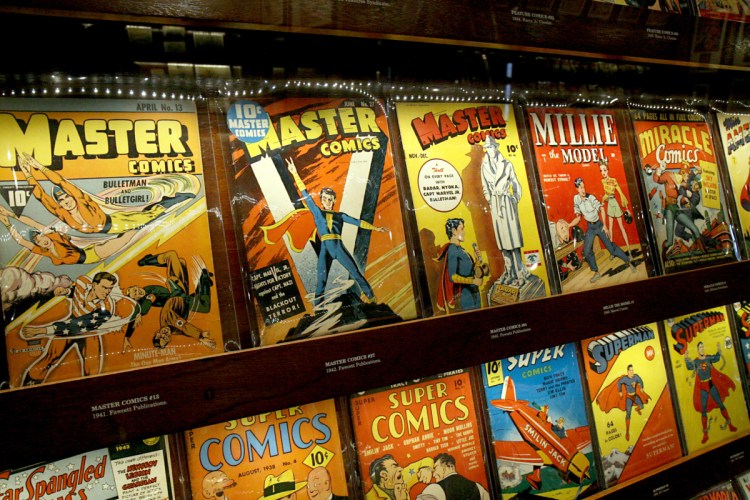WASHINGTON – The Library of Congress has acquired its largest donation ever of comic books, as well as other pop-culture memorabilia, from early Mickey Mouse storyboards to memorabilia that dates back to the dawn of American newspaper comics.
The impressive acquisition, which is set to be announced Wednesday, comes courtesy of Baltimore-based collector and entrepreneur Stephen A. Geppi, who is donating more than 3,000 items from his holdings, many spanning the eight-decade history of the American comic-book industry. His Mickey Mouse storyboards are from the Jazz-Age animated short “Plane Crazy,” which was inspired by Charles Lindbergh. Other items include printing blocks from Richard Outcault’s fin-de-siecle comic-strip character the Yellow Kid, Beatles memorabilia and a No. 2 Brownie camera model F from Eastman Kodak, the library says.
The donation – which the library says it is valuing “in the millions” – was born out of months of conversations between Librarian of Congress Carla Hayden, who champions ways in which the public might view the library’s scope anew, and Geppi, who opened Geppi’s Entertainment Museum in Baltimore in 2006.
“As I have interacted with people in our buildings and at other libraries across the country, I have found that when you tell them we have the world’s largest collection of comic books, they do a double-take, because it makes them think about the Library differently,” Hayden tells The Washington Post. “It makes them realize (that) maybe there is something here for me. It is a way to get people’s attention and pull them in.”
She adds, “When Steve asked about making this gift, I was just thrilled, because it supports something here that is a touchstone for many people who might not otherwise think the Library of Congress is a library for them.”
Last year, Hayden moderated a conversation with “Wonder Woman” television star Lynda Carter as part of a library exhibit spotlighting its superhero comic holdings.
Geppi, a comics distributor who first opened his private pop collection to invitation-only viewings in 1995, says that his eyes were fully opened to the library’s commitment to comics when Hayden arranged his viewing of the library’s original art for Amazing Fantasy No. 15 – the historic comic by Stan Lee and Steve Ditko that features the 1960s debut of Spider-Man.
Soon, a light went on for him, as he considered the future of his own museum collection, which he says he built over several decades as “a monument to people’s childhood.”
“Can you imagine having Action Comics No. 1 sitting right next to the Gutenberg Bible in a display – putting it on that level of importance in pop culture?” Geppi tells The Post, referencing the 1938 comic book in his collection in which Superman made his debut. The acquired items will move from his museum to the Library, and he is still considering where he will house the rest of his collection.
Geppi, who was born in Baltimore’s Little Italy neighborhood in 1950, notes that comics were condemned by Congress in that very decade, and that he believes the comic-book industry took much of the century to recover. Part of his mission has been to see that comic art is rightfully appreciated.
“Comics needed to put in a setting where they were seen as valuable,” he says. “If it was good enough for Renoir, it was good enough for Mickey.”
That dovetails ideally with the library’s own vision.
“With this extraordinarily generous gift from Stephen Geppi, we not only fill in gaps in our collection, but enhance the ability of researchers to understand the indelible role comics played in American entertainment and culture,” says Sara Duke, curator at the library’s rare prints and photographs division, noting that the Library of Congress has systematically sought out original cartoon art since the 1950s, with a broadened scope in the past decade to include small-press comics and mainstream comic-book collections.
“The magnitude of this gift is overwhelming,” Duke continues. “We, as an institution, intend to honor it by making the collection as accessible as possible to Americans (and) the world while still preserving it for future generations.”
There are “really only two American art forms: jazz and comics,” Geppi says. “And this collection deserves to be in a place that can preserve it forever.”
Send questions/comments to the editors.


